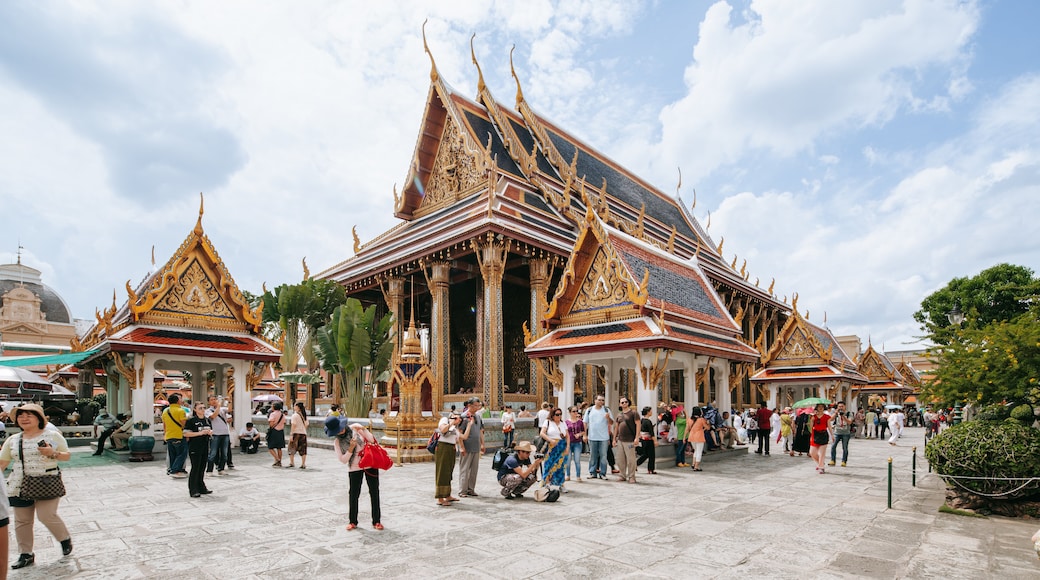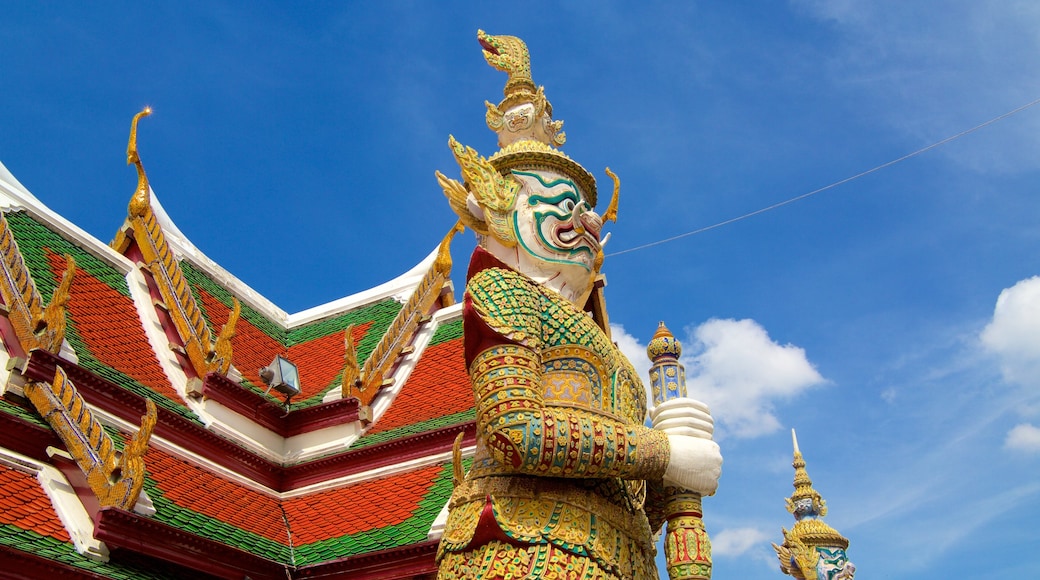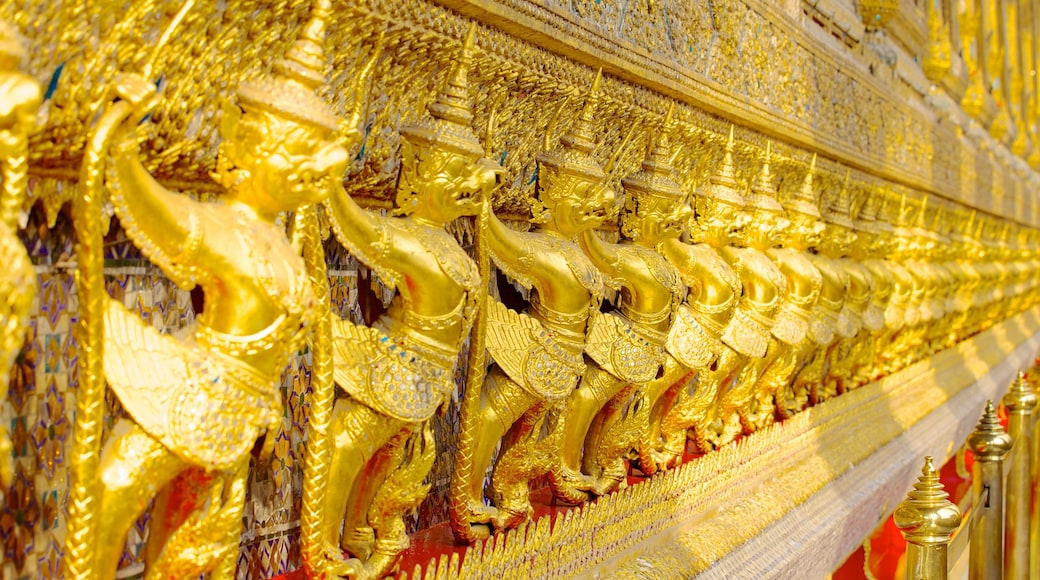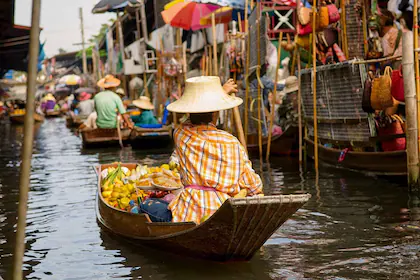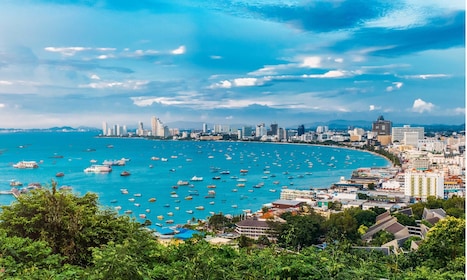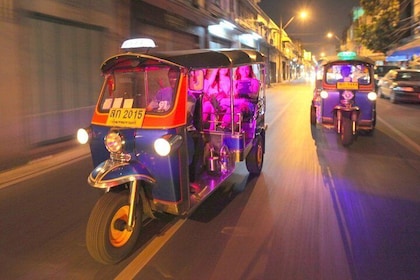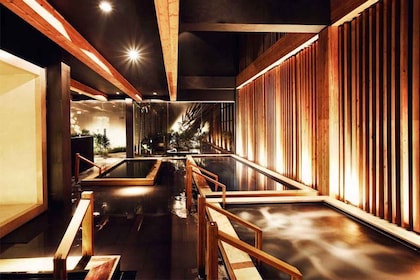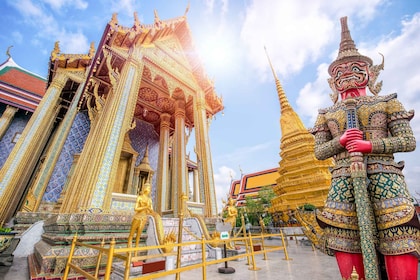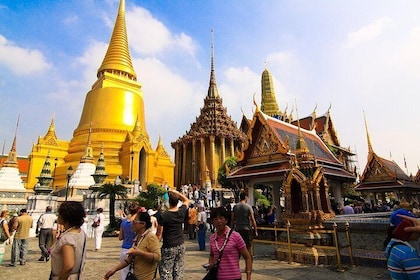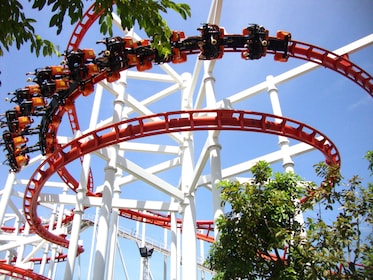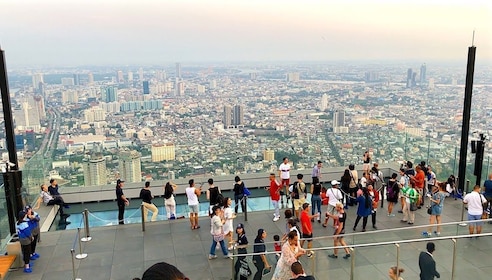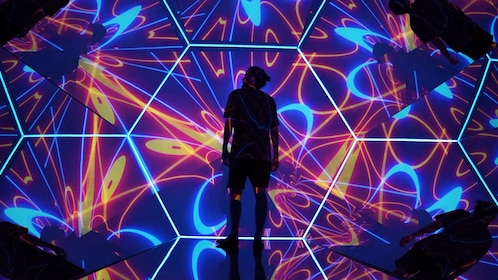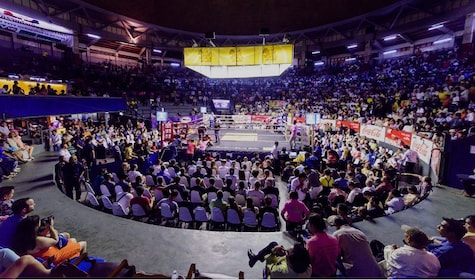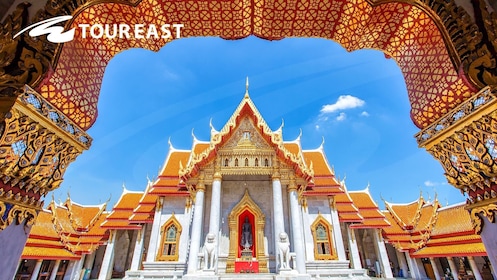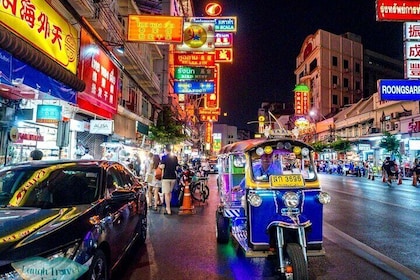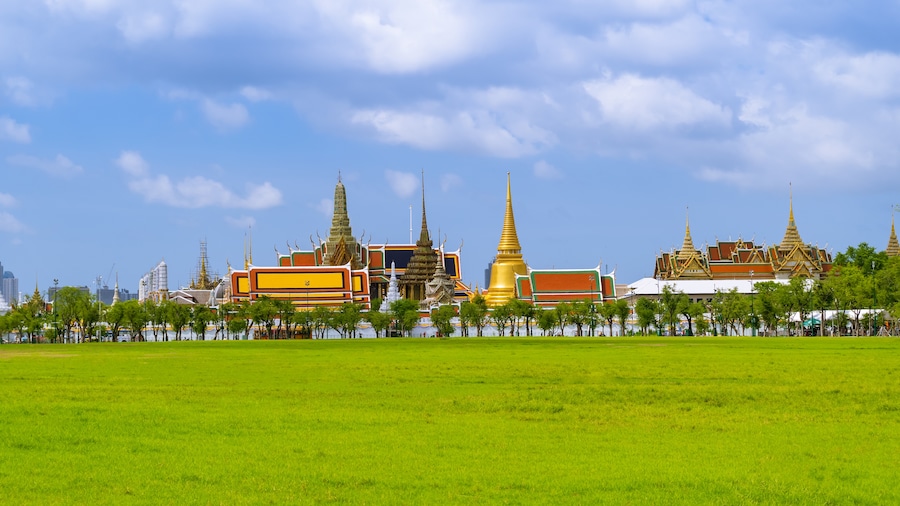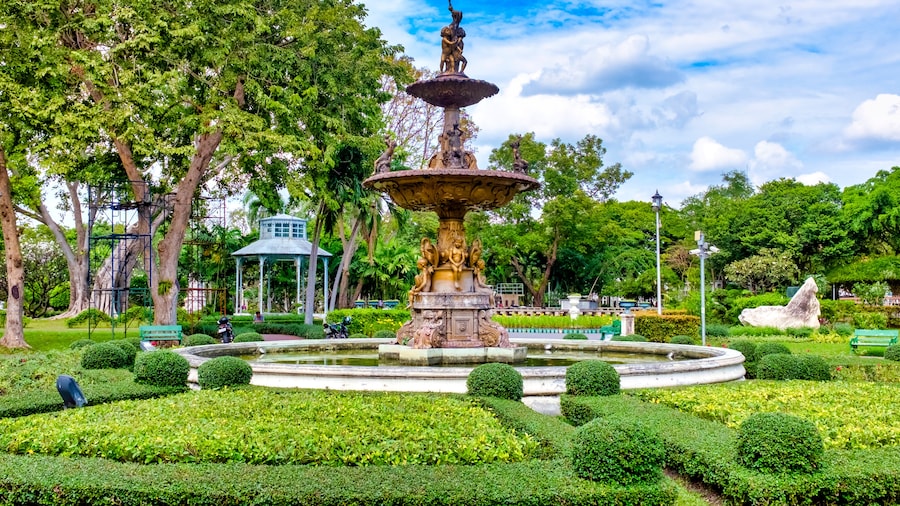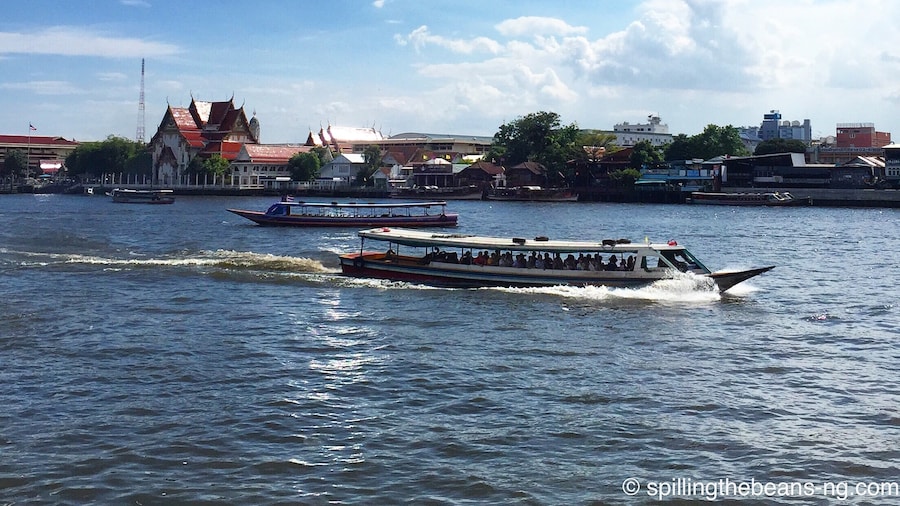A small but extremely important Thai religious icon sits on a golden pedestal within the ornate Wat Phra Kaew structure on the grounds of the Grand Palace.
“Temple of the Emerald Buddha” is the English nickname for the striking place where you can admire the most sacred object in the Kingdom of Thailand: a small stone Buddha that sits in a meditative pose on an oversized golden throne. Thai people believe it is the oldest sculpture of Buddha, which makes it a much-worshipped object.
Wat Phra Kaew, as Thai people call the temple, is part of the Grand Palace complex. Its official name is Phra Sri Rattana Satsadaram, which means “the residence of the Holy Jewel Buddha.” The ornate temple was built in 1782 under King Rama I, who moved the Emerald Buddha from Wat Arun across the river.
Admire the temple’s mosaics and gilded features before you step inside. The Buddha statue doesn’t contain emeralds, and gets its name because it was carved from a single block of green jade stone. The statue was found hidden in stucco in a temple in Chieng Rai in the early 1400s.
In neighboring regions, you’ll find various conflicting chronicles about the creation and mystical travels of the ancient Emerald Buddha before it was rediscovered. Despite its unconfirmed age and origins, Thai culture still holds the statue in reverence. It is believed to bring legitimacy and prosperity to all who possess it.
Join the line of pilgrims who eagerly make the journey from all over the country to pay homage. At every change of season, the Thai king presides over the ceremonial changing of the Buddha’s outfit. As you make your way around the rest of the temple, don’t miss the model of Angkor Wat, the Cambodian temple complex where the statue was housed when it was under Siamese control. Step through the giant gatekeeping statues onto the temple balcony to see murals depicting the Ramayana legend.
The Grand Palace and the Temple of the Emerald Buddha are open daily but close by mid-afternoon, so get there early. As you enter the site, you are asked to dress respectfully, which includes covering arms, legs and feet. Ferry or taxi is the most convenient way to get there.

